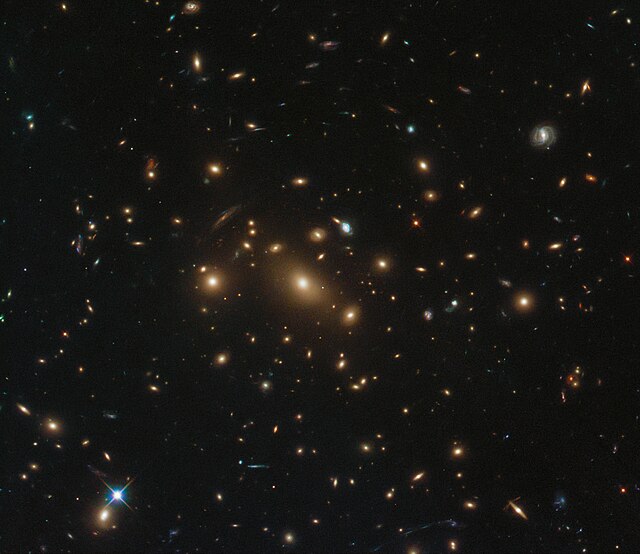SN 1993J is a supernova observed in the galaxy M81. It was discovered on 28 March 1993 by F. Garcia in Spain. At the time, it was the second-brightest type II supernova observed in the twentieth century behind SN 1987A,
peaking at a visible apparent magnitude of 10.7 on March 30, with a second peak of 10.86 on April 18.
A GALEX image of Messier 81 in ultraviolet light. Credit:GALEX/NASA/JPL-Caltech.
Artist's impression of supernova 1993J
A supernova is a powerful and luminous explosion of a star. A supernova occurs during the last evolutionary stages of a massive star, or when a white dwarf is triggered into runaway nuclear fusion. The original object, called the progenitor, either collapses to a neutron star or black hole, or is completely destroyed to form a diffuse nebula. The peak optical luminosity of a supernova can be comparable to that of an entire galaxy before fading over several weeks or months.
SN 1994D (bright spot on the lower left), a type Ia supernova within its host galaxy, NGC 4526
The Crab Nebula is a pulsar wind nebula associated with the 1054 supernova.
A 1414 text cites a 1055 report: since "the baleful star appeared, a full year has passed and until now its brilliance has not faded".
2015 supernova in galaxy cluster RXC J0949.8+1707. In 2011, two supernovae were observed in the same face-on spiral galaxy.






